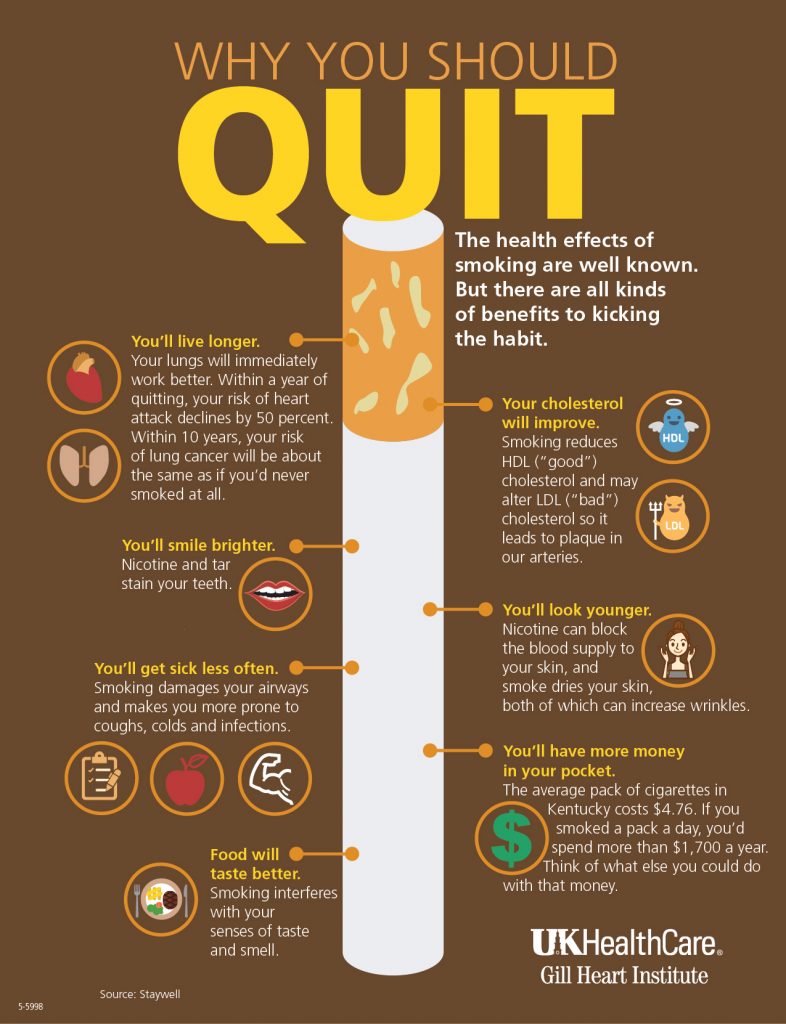Have you tried several times to quit smoking and you find yourself back in it? Or you rather think it’s something you can’t get out of.
The good news is that thousands of people do just that every year. They’ve found their way out and enjoy a comfortable life free of thoughts of smoking. Most of them believed at one time, just as you probably do, that they couldn’t quit.
How did they do it? While there is no magic that makes smoking cessation easy and pain-free, there are steps you can take to develop the commitment necessary to quit smoking in a way that will bring you lasting success.
7 tips to help you quit smoking

1. Find Your Reason To Quit
To get motivated, you need a powerful, personal reason to quit. It may be to protect your family from secondhand smoke. Or lower your chance of getting lung cancer, heart disease, or other conditions. Or to look and feel younger. Choose a reason that is strong enough to outweigh the urge to light up.
2. Prepare Yourself Before You Go
There’s more to it than just tossing your cigarettes out. Smoking is an addiction. The brain is hooked on nicotine. Without it, you’ll go through withdrawal. Line up support in advance. Ask your doctor about all the methods that will help, such as quit-smoking classes and apps, counseling, medication, and hypnosis. You’ll be ready for the day you choose to quit.
3. Consider Nicotine Replacement Therapy
When you stop smoking, nicotine withdrawal may give you headaches, affect your mood, or sap your energy. The craving for “just one drag” is tough. Nicotine replacement therapy can curb these urges. Studies show that nicotine gum, lozenges, and patches improve your chances of success when you’re also in a quit-smoking program.
4. Lean On Your Loved Ones
Tell your friends, family, and other people you’re close to that you’re trying to quit. They can encourage you to keep going, especially when you’re tempted to light up. You can also join a support group or talk to a counselor. Behavioral therapy is a type of counseling that helps you identify and stick to quit-smoking strategies. Even a few sessions may help.
5. Avoid Alcohol and Other Triggers
When you drink, it’s harder to stick to your no-smoking goal. So try to limit alcohol when you first quit. Likewise, if you often smoke when you drink coffee, switch to tea for a few weeks. If you usually smoke after meals, find something else to do instead, like brushing your teeth, taking a walk, texting a friend, or chewing gum.
6. Clean Up Your House
Once you’ve smoked your last cigarette, toss all of your ashtrays and lighters. Wash any clothes that smell like smoke, and clean your carpets, draperies, and upholstery. Use air fresheners to get rid of that familiar scent. If you smoked in your car, clean it out, too. You don’t want to see or smell anything that reminds you of smoking.
7. Eat Fruits and Veggies
Don’t try to diet while you give up cigarettes. Too much deprivation can easily backfire. Instead, keep things simple and try to eat more fruits, vegetables, whole grains, and lean protein. These are good for your whole body.




